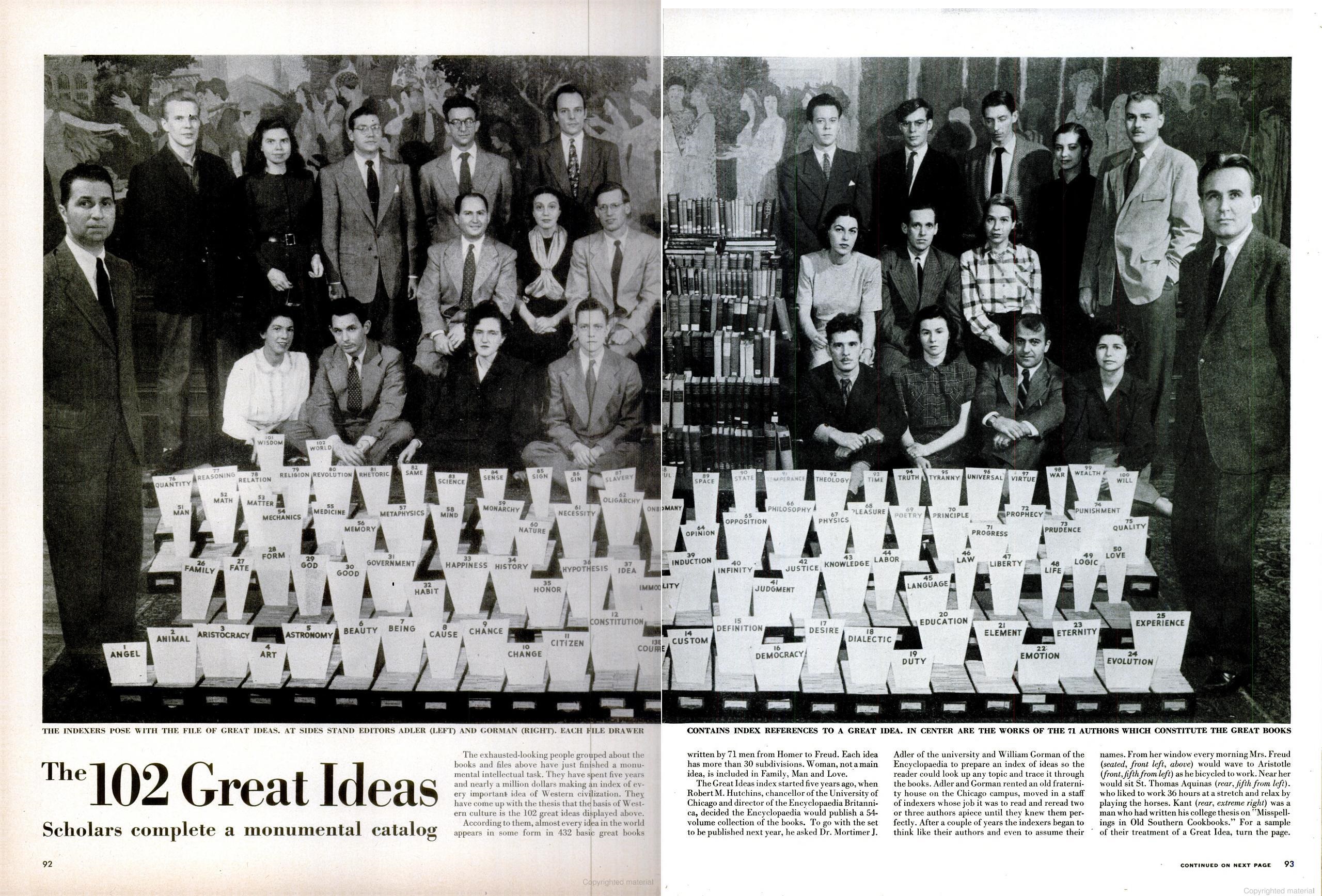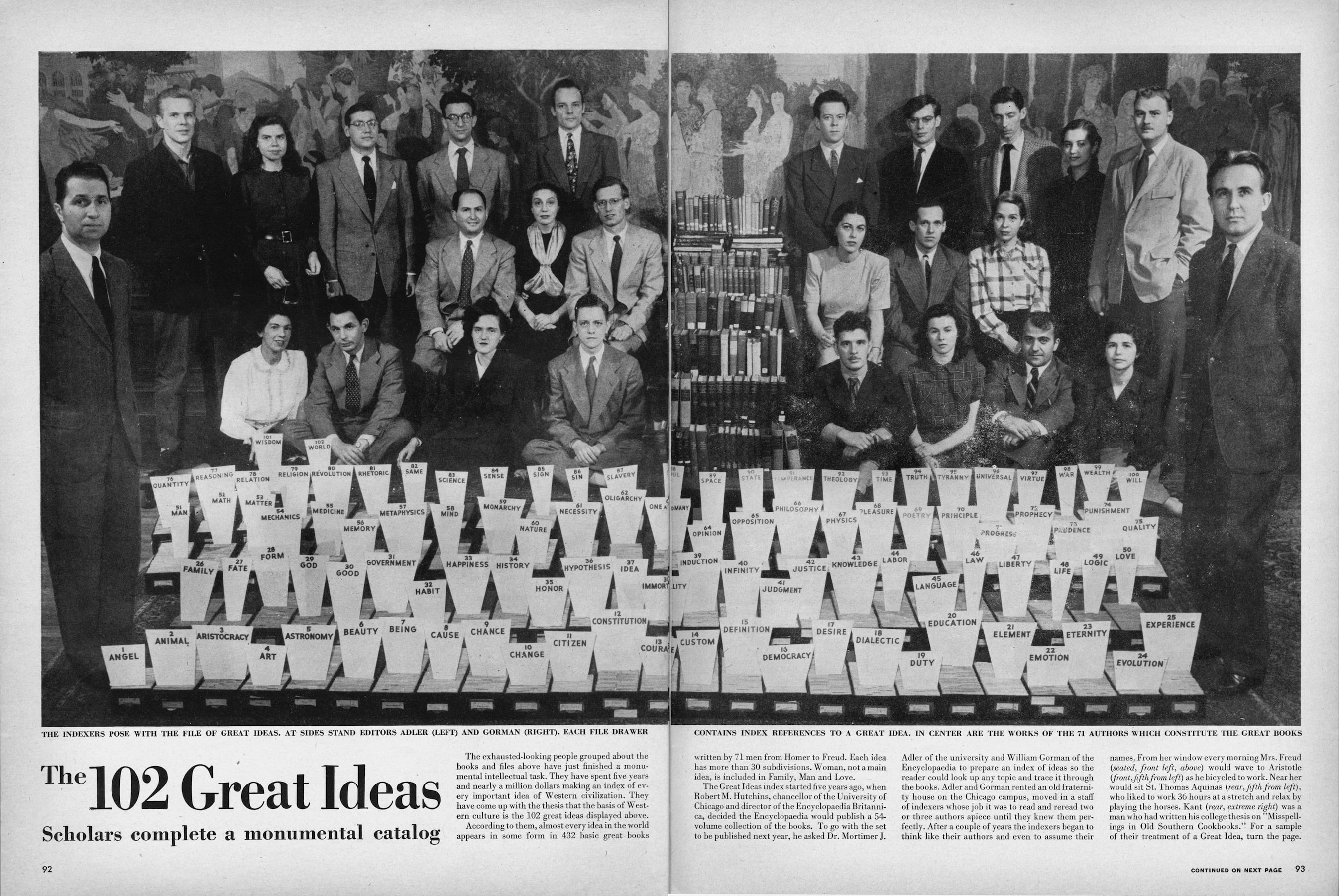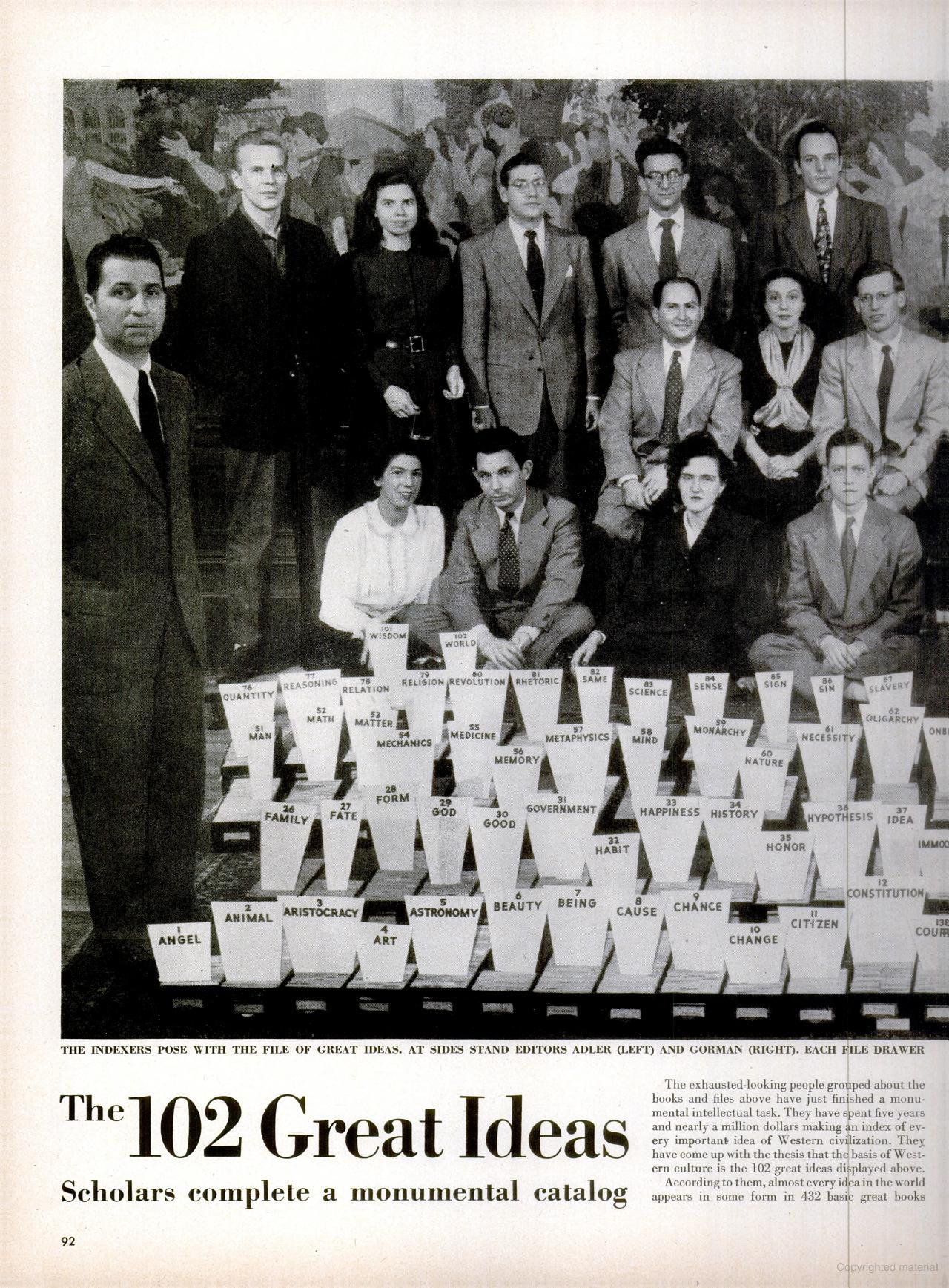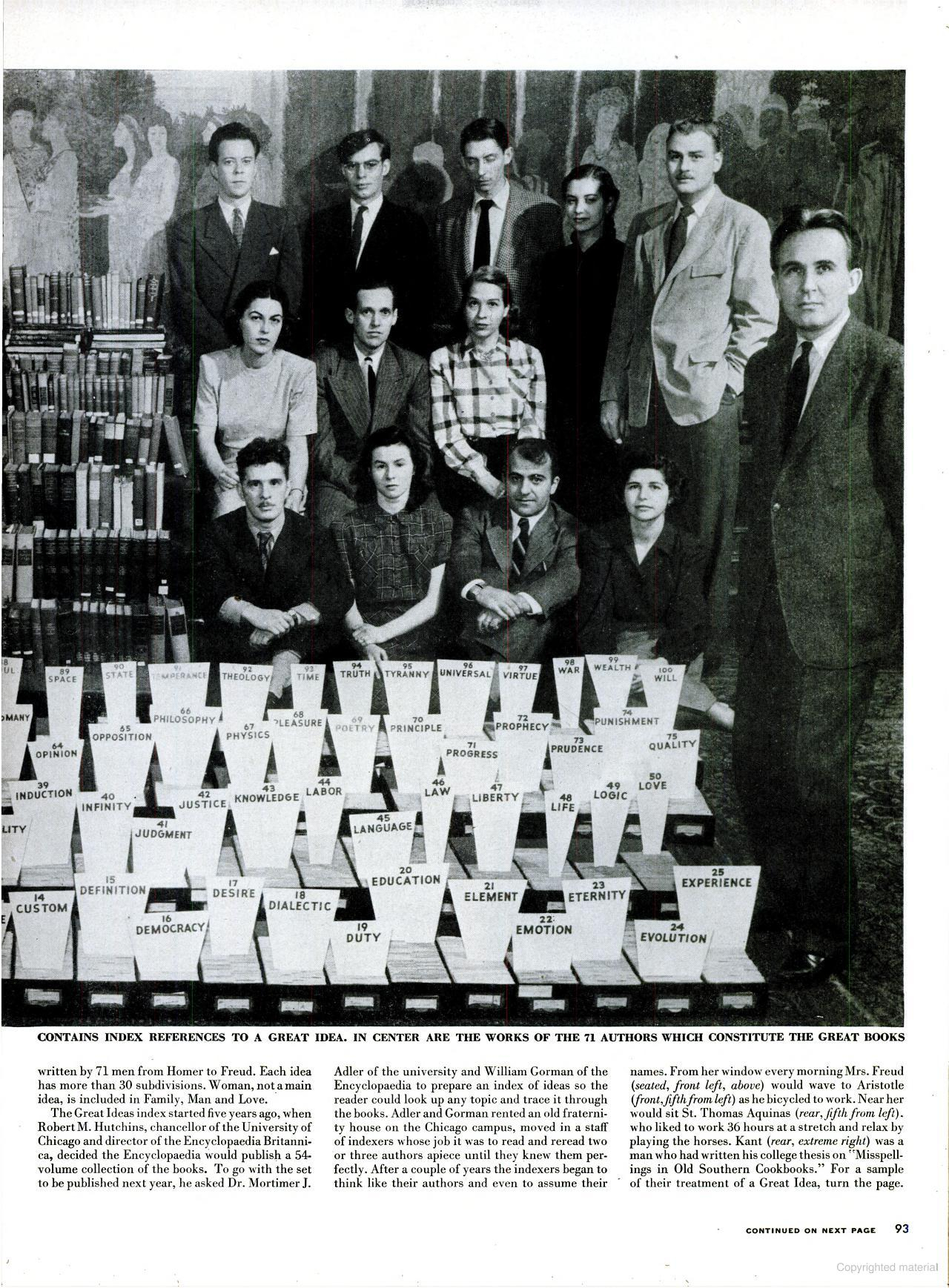reply to u/Paddy48ob at https://www.reddit.com/r/antinet/comments/17jscyk/comment/k80z1nn/?utm_source=reddit&utm_medium=web2x&context=3
Thanks for this pointer. As a note, when I compare my 1954 version against the photo of the 1990 edition (which has fewer pages), it's obvious that the "1. The ends of education" section in the 1954 edition is significantly more thorough with more references (and supplementary data) which don't exist in the 1990 edition. The 1990 edition presumably removes the references for the books which they may have removed from that edition (though it may have actually been even more--I didn't check this carefully).
Just comparing the two pages that I can see, I don't see any references to the added texts of the 1990 edition appearing in that version of the Syntopicon at all.
I took a quick look at the Syntopicon V1 (1990) via the Internet Archive and of the added texts that year I sampled searches for Voltaire, Erasmus, and John Calvin and the only appearances of them to be found are in the Addition Bibliography sections which is also where they appeared in the 1952 editions. My small sampling/search found no added references of any of these three to the primary portions of the main References sections, so they obviously didn't do the additional editorial work to find and insert those.
As a result, it appears that the 1952 (and reprint editions following it) have a measurably better and more valuable version of the Syntopicon. The 1990 (2nd Edition) is a watered down and less useful version of the original. It is definitely not the dramatically improved version one might have hoped for given the intervening 38 years.

 “The Indexers pose with the file of Great Ideas. At sides stand editors [Mortimer] Adler (left) and [William] Gorman (right). Each file drawer contains index references to a Great Idea. In center are the works of the 71 authors which constitute the Great Books.” From “The 102 Great Ideas: Scholars Complete a Monumental Catalog,” Life 24, no. 4 (26 January 1948). Photo: George Skadding.
“The Indexers pose with the file of Great Ideas. At sides stand editors [Mortimer] Adler (left) and [William] Gorman (right). Each file drawer contains index references to a Great Idea. In center are the works of the 71 authors which constitute the Great Books.” From “The 102 Great Ideas: Scholars Complete a Monumental Catalog,” Life 24, no. 4 (26 January 1948). Photo: George Skadding.
